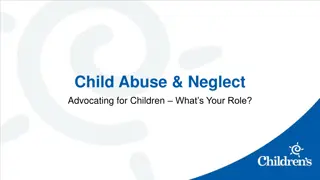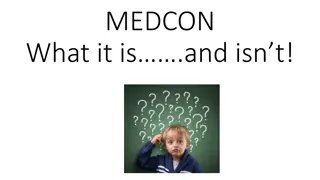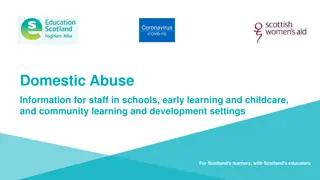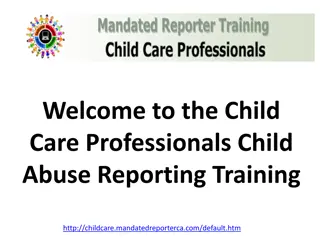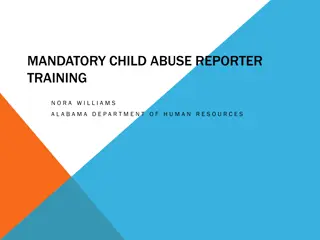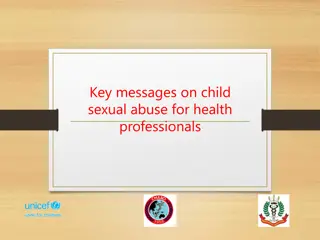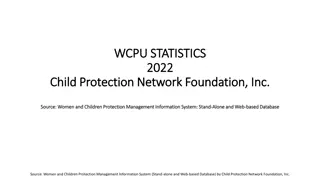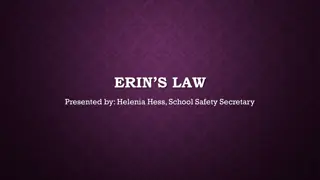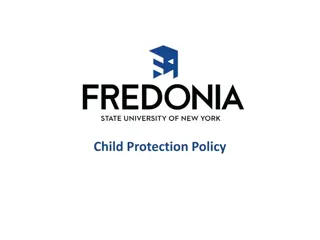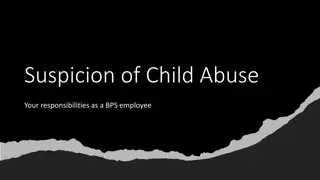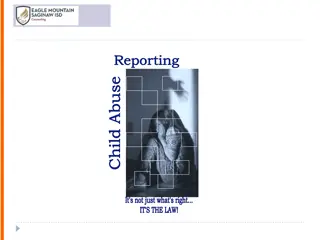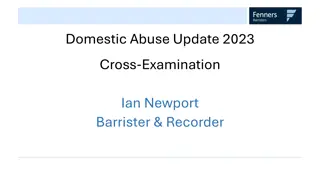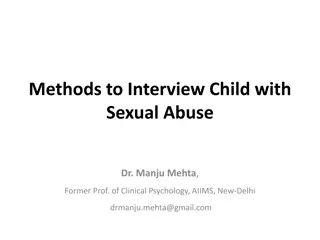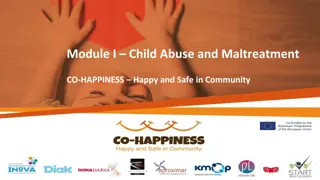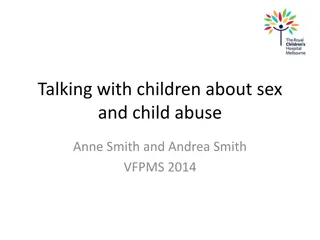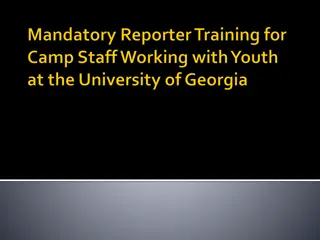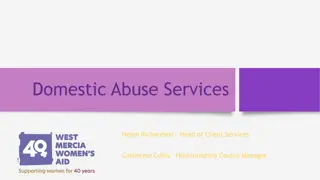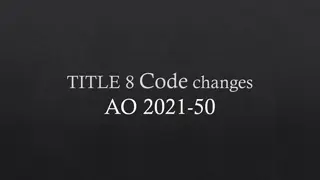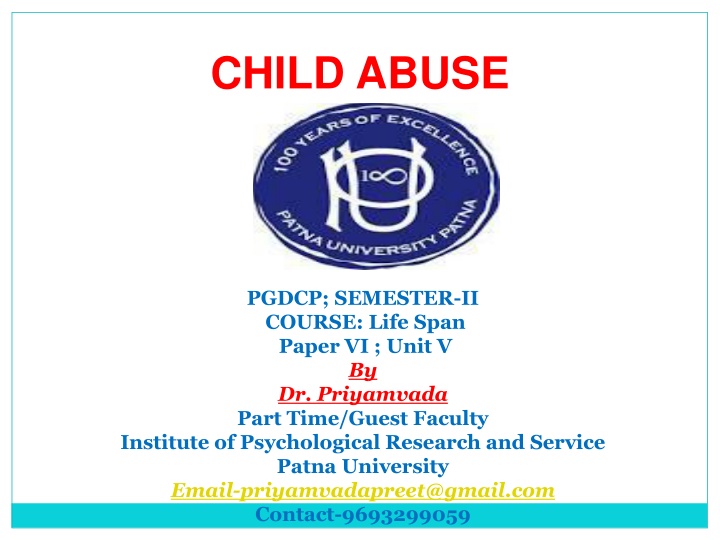
Child Abuse and Its Impact on Families
Explore the complex factors contributing to child abuse and its impact on families, including characteristics of parents and abused children. Discover how family functioning breakdown and other circumstances lead to severe mistreatment. Learn about the signs and consequences of child abuse to raise awareness and promote prevention.
Download Presentation

Please find below an Image/Link to download the presentation.
The content on the website is provided AS IS for your information and personal use only. It may not be sold, licensed, or shared on other websites without obtaining consent from the author. If you encounter any issues during the download, it is possible that the publisher has removed the file from their server.
You are allowed to download the files provided on this website for personal or commercial use, subject to the condition that they are used lawfully. All files are the property of their respective owners.
The content on the website is provided AS IS for your information and personal use only. It may not be sold, licensed, or shared on other websites without obtaining consent from the author.
E N D
Presentation Transcript
CHILD ABUSE PGDCP; SEMESTER-II COURSE: Life Span Paper VI ; Unit V By Dr. Priyamvada Part Time/Guest Faculty Institute of Psychological Research and Service Patna University Email-priyamvadapreet@gmail.com Contact-9693299059
Abused children and their parents In some, cases family functioning breaks down and severe abuse of children may occur. Many of these children have been sexually molested, starved burned, beaten, cut, chained to furniture, or kept in isolation. What circumstances contribute to this disastrous treatment of children? Some of the contributing factors lie in the characteristics of parents and their abused children.
Abused children and their parents Child abusers are found in all social classes and all religious, racial, and ethnic groups. In addition, there is no evidence of severe mental illness as a major contributing factor in child maltreatment. Abusive mothers tend to be emotionally immature and frustrated. They are more defensive, more anxious and more aggressive. And less intelligent and less concerned about social conformity than are more competent mothers.
Abused children and their parents Characteristics of the Child and families- Certain characteristics of child and family also are associated with the maltreatment of children. child abuse is more likely to occur in large families and to children under the age of 3. A higher than normal incidence of birth anomalies, physical and intellectual deviations, irritability, excessive crying with a peculiar and extremely irritating cry, fussiness, negativism, and other behaviors that exasperate the parents are found in many of these children. These factors may all contribute to the parents feeling antagonistic to the child and feeling that the child is different. Abusive parents frequently feel that the child is abusing them. It should not be thought that these characteristics are found in all abused children; it is just that they are found more often in abused than non-abused children. It may be that such problems in children are enough to tip the balance in already stressed families.
Abused children and their parents Parents in these families often have conflicts with each other and are socially isolated. The isolation may contribute in part to the fact that these parents often do not seem to recognize the seriousness of their behavior and blame the child rather than themselves for what is occurring. T hey even justify their behavior by saying they are doing it for the child s good or that harsh discipline is necessary if children are to be taught what is right. It is not surprising that mothers are often the persons who abuse the child. They are locked into a stressful family situation and spend more time with the child than do other family members .
Abused children and their parents Abusive parents seem to have unrealistic beliefs about parent-child relations and to respond less appropriately to their children s behavior than do non-abusive parents. They often expect their children to an impossibly developmentally advanced way or to exhibit levels of independence and self-control that would be unlikely in children of that age.
Abused children and their parents Physical violence is preceded by an escalating cycle of other forms of verbal and physical aggression. Abusive mothers show fewer positive behavior and more negative behaviors such as threatening commands, criticism, and physical aggression towards their children than do non- abusive mothers. These stressed and abusive parents do not discriminate of positive and negative responses to their unpleasant child s behavior like crying and they tend to overreact. This failure of maltreating mothers to discriminate between desirable and undesirable children s behavior is also reflected in physiological measures. Abusive mothers in contrast to non- abusive mothers show a similar pattern of autonomic arousal in response to either a smiling or crying baby. They seem to be experiencing both the crying baby and the pleasant happy baby as emotionally aversive.
References: World report on violence and health; child abuse and neglect by parents and other caregivers. Hetherington and Parke(1999); Child Psychology. Google images and Google search. Thank you

